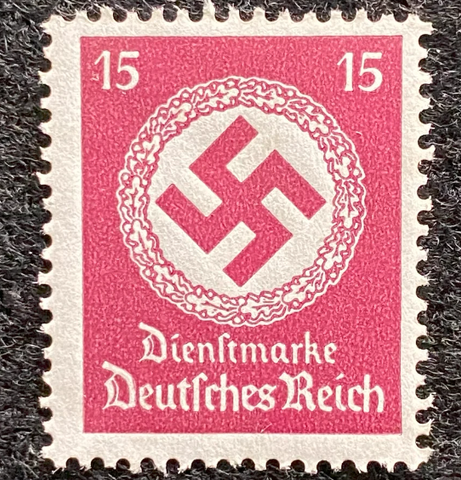Third Reich Stamps: Fascinating Philatelic Artifacts from Nazi Germany
Introduction
Third Reich stamps, originating from the era of Nazi Germany (1933-1945), are much more than mere postage labels. They serve as historical windows into one of the most tumultuous periods of the 20th century. These stamps, bearing the indelible marks of Adolf Hitler's regime, offer a unique perspective on the propaganda, art, and politics of the time. In this article, we will explore the history, symbolism, and enduring legacy of Third Reich stamps, shedding light on their value for collectors, historians, and anyone interested in this dark chapter of human history.
I. The Historical Context
To understand the significance of Third Reich stamps, one must first delve into the historical context that gave rise to them. Adolf Hitler's ascent to power in 1933 marked the beginning of the Nazi regime, a totalitarian government that sought to reshape Germany and impose its ideology on the world.
The role of stamps during this era extended far beyond their utilitarian purpose. These small, often overlooked pieces of paper became powerful tools for conveying the Nazi message to both domestic and international audiences.
II. The Propaganda Power of Third Reich Stamps
- Iconic Imagery
Third Reich stamps were meticulously designed to promote Nazi propaganda. The most prominent symbol featured on these stamps was the swastika, which the Nazis co-opted to represent their twisted interpretation of Aryan supremacy. Swastikas adorned stamps of various denominations, serving as a constant reminder of the regime's ideology.
- Portraits of Leaders
Another common feature on Third Reich stamps was the likeness of Adolf Hitler himself. His image graced numerous stamps during the regime's early years, reinforcing his cult of personality and authority.
- Celebrating Milestones
The Nazi regime used stamps to commemorate significant events, such as Hitler's birthdays or the Nuremberg Rallies. These stamps often featured elaborate designs and were intended to glorify the regime's achievements.
III. The Evolution of Third Reich Stamp Design
The design of Third Reich stamps underwent several phases, reflecting the changing political and economic landscape of the era.
- Early Years (1933-1936)
The stamps issued in the early years of the Third Reich showcased Hitler's image alongside more subdued uses of the swastika. This period marked the removal of Weimar Republic symbols and mottos from postage, symbolizing a break from the past.
- The Olympics (1936)
The 1936 Berlin Olympics provided a global stage for Nazi propaganda. Commemorative stamps featuring Olympic themes were heavily circulated, projecting an image of international cooperation while the regime's aggression continued to mount.
- Wartime Stamps (1939-1945)
As World War II unfolded, the design of Third Reich stamps grew simpler due to economic constraints. The focus shifted from aesthetics to functionality, with fewer elaborate designs. Nonetheless, the propaganda message remained a central feature on these stamps.
IV. The Legacy of Third Reich Stamps
Today, Third Reich stamps are collectible items, sought after by philatelists, historians, and collectors alike. They offer valuable insights into the political and cultural climate of Nazi Germany, as well as the psychology of propaganda.
- Collecting Third Reich Stamps
Philatelists collect Third Reich stamps for various reasons, including historical interest and artistic appreciation. It is essential for collectors to approach these stamps with sensitivity, recognizing the historical context and the atrocities committed by the Nazi regime.
- Educational and Commemorative Use
Museums and educational institutions worldwide use Third Reich stamps as teaching tools to educate the public about World War II and the Holocaust. Exhibits featuring these stamps help raise awareness about the horrors of the past and promote tolerance and understanding.
Conclusion
Third Reich stamps are more than just postage labels; they are tangible artifacts that offer a unique perspective on a dark period in human history. These stamps serve as a lasting testament to the power of propaganda and the extent to which a regime can manipulate even the most mundane aspects of daily life.
While Third Reich stamps hold historical and collectible value, it is imperative to approach them with sensitivity, acknowledging the suffering endured during the Nazi era. By preserving and studying these stamps responsibly, we ensure that the lessons of history are not forgotten and that we remain vigilant against the resurgence of extremist ideologies in the future.

